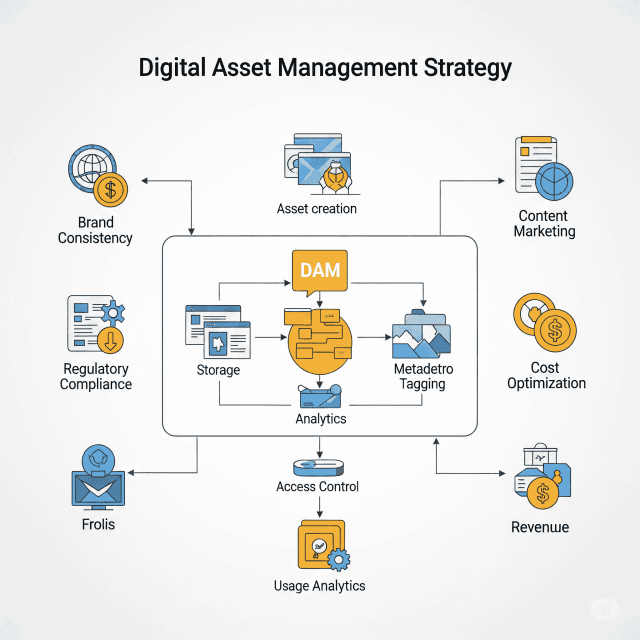In today’s digital-first world, businesses face an overwhelming abundance of digital assets—images, videos, documents, and even social media posts. As these assets multiply, effective management becomes crucial. This is where a Digital Asset Management (DAM) strategy comes into play. Here, we’ll explore why every business should prioritize a robust DAM strategy to enhance efficiency, branding, and competitiveness.
1. Centralized Repository for Digital Assets
A well-implemented DAM strategy provides a centralized repository where all digital assets can be stored, organized, and accessed by relevant stakeholders. This single source of truth reduces the chances of misplacing files or duplicating efforts, streamlining workflows across departments. With a comprehensive cataloging system, team members can quickly find what they need, saving valuable time and resources.
2. Enhancing Brand Consistency
Consistency is key in building a strong brand identity. A DAM system allows businesses to maintain uniformity across all digital assets, ensuring they align with branding guidelines. By controlling how assets are used and distributed, companies can better manage their reputation and ensure brand integrity, which is vital in today’s marketplace.
3. Streamlined Collaboration and Workflow
A DAM system enhances collaboration across teams by providing a transparent and efficient workflow for digital assets. Marketing, sales, and design teams can easily share and edit materials without the hassle of email chains or hypothetical file versions. Real-time collaboration tools within a DAM foster innovation while reducing the potential for errors and misunderstandings.
4. Improved Security and Access Control
Digital assets can be sensitive in nature. A strategic DAM system provides enhanced security features, allowing businesses to manage who has access to particular assets. This ensures that proprietary information is protected, complying with data regulations while minimizing the risks associated with unauthorized use.
5. Better Asset Usage and ROI Tracking
Understanding the performance of digital assets is essential for ongoing strategy refinement. A good DAM system often includes analytics and reporting tools, helping businesses track usage, engagement, and return on investment (ROI). By analyzing which assets perform best, companies can make informed decisions about future content creation and marketing strategies.
6. Scalability for Growth
As businesses grow, so does the volume of digital assets. A scalable DAM strategy can adapt to increasing requirements without overwhelming teams. This ensures that businesses can continue to operate efficiently, even as they expand their digital footprint and enter new markets.
7. Facilitating Compliance and Legal Requirements
Different industries face varying compliance and legal requirements regarding digital content. A DAM strategy helps ensure that all assets comply with such regulations, from copyright laws to privacy standards. By keeping thorough records and permission settings, businesses can protect themselves from potential legal issues down the line.
8. Enhanced Customer Experience
The way businesses use their digital assets can significantly impact customer experience. By having high-quality content readily available, companies can engage customers effectively through tailored marketing campaigns, responsive social media engagement, and personalized user experiences. A strong DAM system supports these efforts by ensuring that teams have access to the best materials.
Conclusion
A Digital Asset Management strategy is no longer a luxury; it’s a necessity for businesses aiming to thrive in the digital age. By centralizing assets, enhancing collaboration, ensuring brand consistency, and streamlining workflows, businesses can leverage their digital resources more effectively. As competition intensifies and customer expectations evolve, implementing a robust DAM strategy will position businesses for future success and sustained growth.









